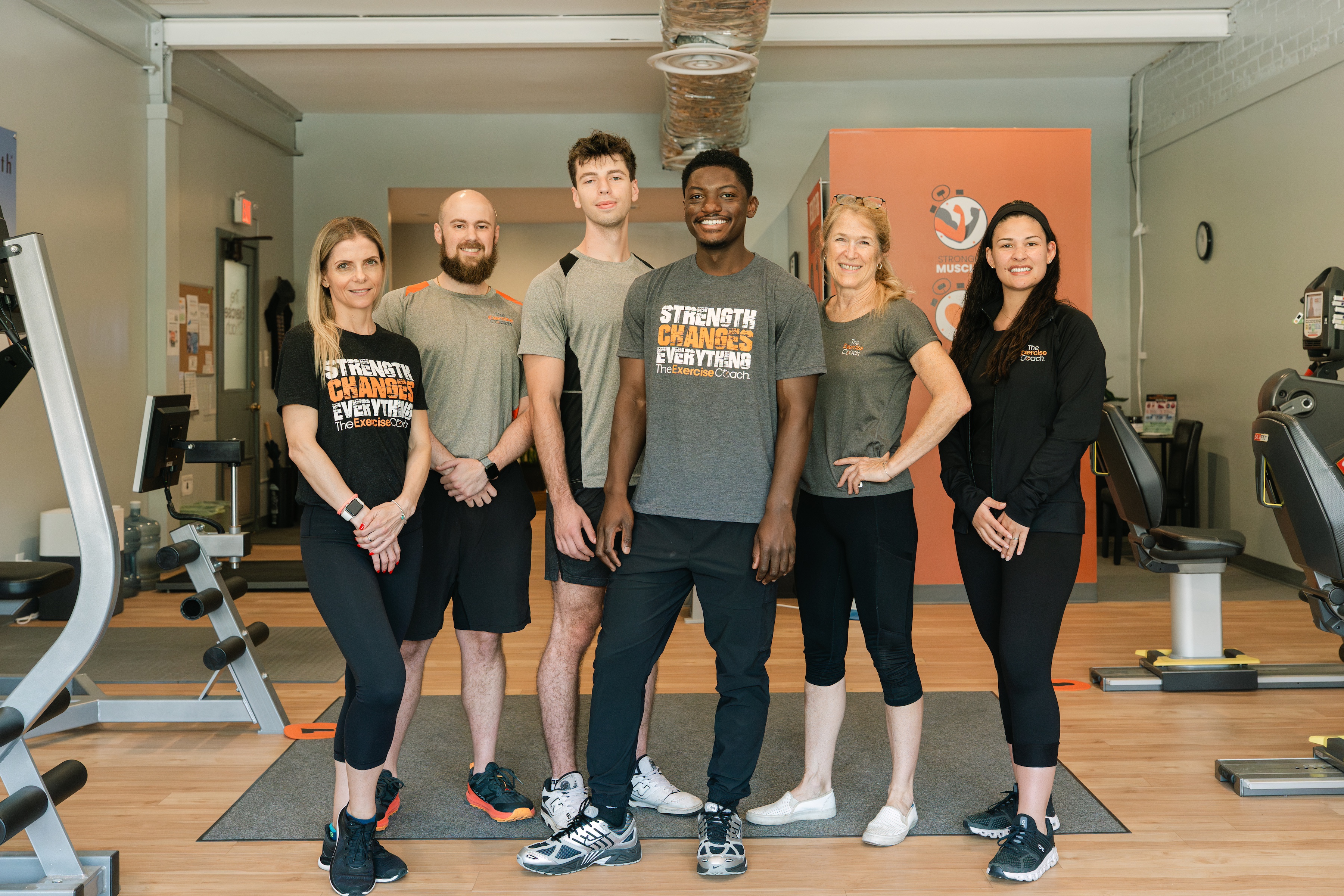The Science of Strength: Why Resistance Training Changes Everything

Why is strength training so important? In addition to increasing our strength, it builds stronger bones (load on the bones stimulates bone cell growth), lubricates and builds strength around our joints, alleviates back pain, activates our “happy” hormones, suppresses our stress hormones, converts fat to muscle and increases the ability of muscles to absorb sugar - among other advantages. It’s also essentially brain food!
And did you know that you’re actually breaking down your muscles when you’re doing strength-training? You’re not getting stronger while you’re working out; you’re getting stronger afterwards. Strength-training creates microscopic tears in your muscle fibers; those tears let the capillaries sneak in, increasing the blood flow and helping to build back the muscle unit to be even stronger than it was before. In fact, at the Exercise Coach, we only recommend working out two (max three) times a week so that muscles have sufficient time to recover and rebuild.
Increasing resistance is critical to strength-training. Resistance is the force our muscles are contracting against, such as pushing a door, which causes our triceps and pecs to contract. Making the door harder to push over time leads to much greater hypertrophy (muscle growth) and performance. It allows you to progressively “overload” your muscles, causing them to grow progressively stronger with each workout.
Interestingly, our muscles are strongest when they are lengthening while under tension. Using the same swing door, imagine trying to push it open while someone stronger is pushing back. Your triceps are lengthening – your arms are coming back towards you instead of pushing out – while under tension. Due to various mechanics of muscles, tendons and connective tissues, you’re exerting more force doing that than you're able to when just pushing straight out ahead of you.
Pushing away from yourself (pushing the door out) is referred to as the concentric portion of the movement; the resistance portion (where the door is being pushed towards you), where your muscles are lengthening under tension, is called the eccentric portion. One of the advantages to our proprietary Exerbotics equipment is that, because the machines are driven by electric power instead of weights, we are able put extra load on the eccentric portion, so that it’s not constrained by the effort you’re able to put into the concentric portion. That’s called “eccentric overloading” and it amps up your workout, so that we get more done in less time.
Constant tension during the exercise is critical, too. Our bodies are designed to be very efficient (we needed to hoard calories back in the olden days) so only activate the muscle fibers they need. The Exerbotics equipment helps you maintain constant tension during each exercise so that your body is forced to exhaust-recruit-exhaust-recruit more and more muscle fibers, tapping all the way through the target muscle unit. This is especially important for your Type II muscle fibers, which are the ones most prone to atrophy as we age. (A subject for another time…search on ‘sarcopenia’!)
Exerbotics equipment helps you keep the constant tension by displaying your exercise movement on the monitor in front of you. There’s a green bar across the screen that identifies the ideal amount of tension, based on your previous workouts, that you should exert from start (on the left) to end (on the right); your effort is reflected by a yellow line moving across that bar. The combination lets you know if you’re pushing too hard or not hard enough – and your yellow line will bottom out if you release the tension (fortunately, no weights crash down)! Clients often compare the workout to playing a video game! When you’re done with each exercise, you even get to see your “score” and how much your strength is building up from your first workout.
Please give us a holler (or text) at 202-792-2886 and we'll book the first of two free sessions so that you can see how this all works for yourself! www.exercisecoach.com